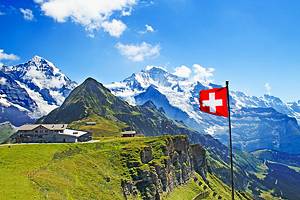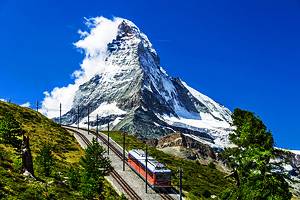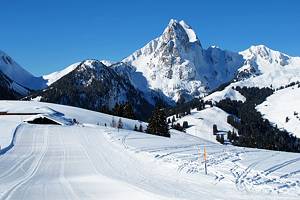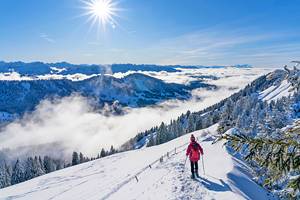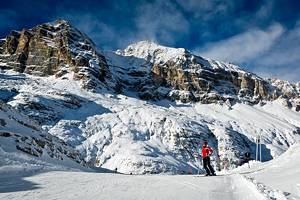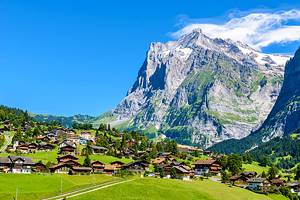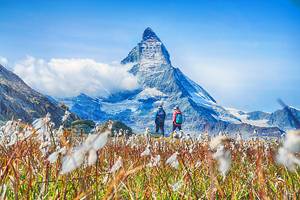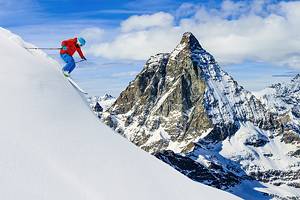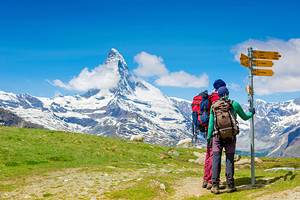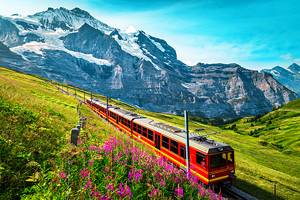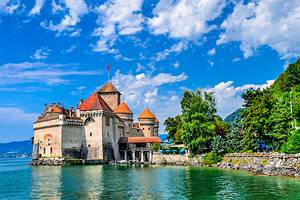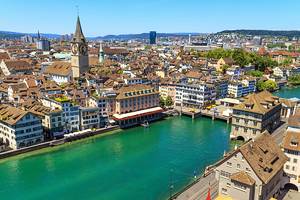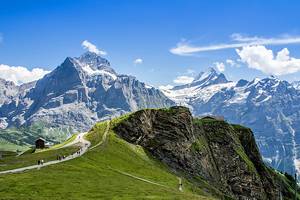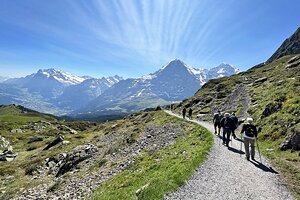Attractions & Things to Do in Lucerne
Lucerne (Luzern in German) lies at the north end of Lake Lucerne (Vierwaldstätter See) where the River Reuss flows out of the lake. The town, with its well-preserved medieval core, elegant historic buildings, and genial atmosphere, is one of the most popular tourist attractions in Switzerland.
Lucerne offers a wealth of things to do. Many visitors come to see leading conductors, soloists, and orchestras perform at the annual summer music festival and at other festivals spotlighting blues, piano, and even marching bands. The Benedictine monastery of St. Leodegar was founded around 730, and the first mention of a town is of Luciaria in 840.
Lucerne is compact and easy to explore, with the old town and all the main sights within walking distance of the rail station. For tourists who love mountain scenery, the biggest attraction of all is Lucerne's location as a base for some of the most spectacular Alpine rides in Europe, with easy connection to Mt. Rigi, Mt. Pilatus, Mt. Titlis, and Jungfraujoch.
Learn more about the best places to visit with our list of the top attractions and things to do in Lucerne.
- See the View from Mt. Pilatus
- Kapellbrücke (Chapel Bridge)
- Explore Lake Lucerne by Boat
- Old Town
- Ride the Cog Railway up Mount Rigi
- Spreuerbrücke
- Löwendenkmal (Lion Monument)
- Verkehrshaus der Schweiz (Swiss Transport Museum)
- Museggmauer & Türme (Town Walls and Towers)
- Hofkirche
- Jesuit Church
- Museum Sammlung Rosengart (Rosengart Collection)
- Gletschergarten (Glacier Garden)
- Walk or Hike to Lakeside Viewpoints
- Engelberg-Titlis
- Bourbaki Panorama
- Day Trip to Jungfraujoch
- Schloss Heidegg (Heidegg Castle)
- Richard Wagner Museum
- Map of Attractions & Things to Do in Lucerne
See the View from Mt. Pilatus
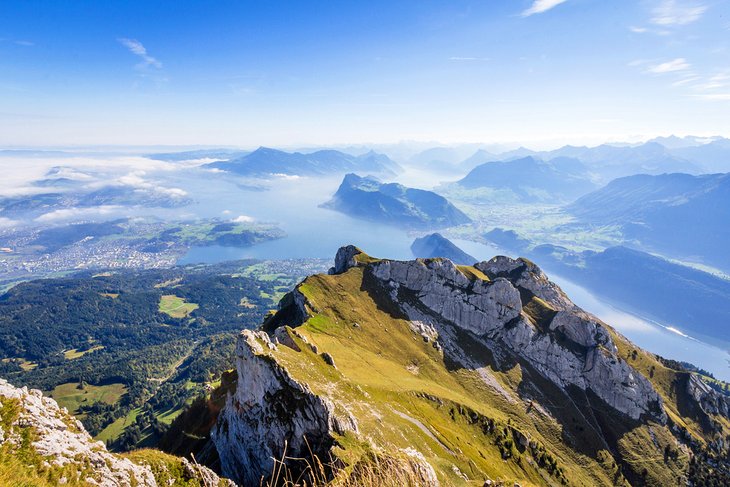
While in Lucerne, it would be a shame to miss the trip up Mount Pilatus, going up by the cableway from Kriens and down by the cog-railroad. The half-hour ride from Kriens leads to another short cable car ride to the 2,070-meter Pilatus-Kulm.
From here, it is a six- to 10-minute climb to the summit of the Esel - the central (but not highest) peak of Pilatus with magnificent views of the Alps. From the Pilatus-Kulm, it is a 30-minute walk to the Tomlishorn, at 2,132 meters, the highest point in this rugged limestone massif.
Alternatively, you can take a boat to Alpnachstad to board the cog-railroad for a 30-minute ride at gradients up to 48 percent through Alpine meadows and forests, over the rock-strewn Mattalp, up the steep rock face, and through four tunnels to the upper station on Pilatus-Kulm, returning via the cableway.
If you don't want to deal with planning a trip and navigating your way to Mount Pilatus, a guided tour is a great option.
Kapellbrücke (Chapel Bridge)
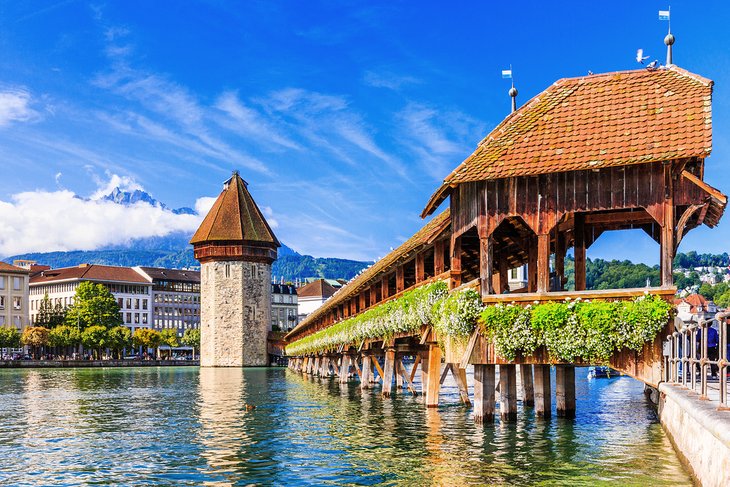
The most characteristic sight in Lucerne is the Kapellbrücke, a covered wooden bridge running diagonally across the Reuss. Apart from being a picturesque centerpiece for Lucerne, the bridge, built in 1333, is interesting for the more than 100 17th-century pictures hanging from the roof rafters inside, depicting patron saints and scenes from the town's history.
The Kapellbrücke was severely damaged by fire in 1993 but has been completely rebuilt and restored. Beside it is the octagonal Wasserturm, a 13th-century water tower more than 34 meters high and once part of the town's fortifications. The bridge and tower are among the most photographed scenes in all Switzerland.
Explore Lake Lucerne by Boat
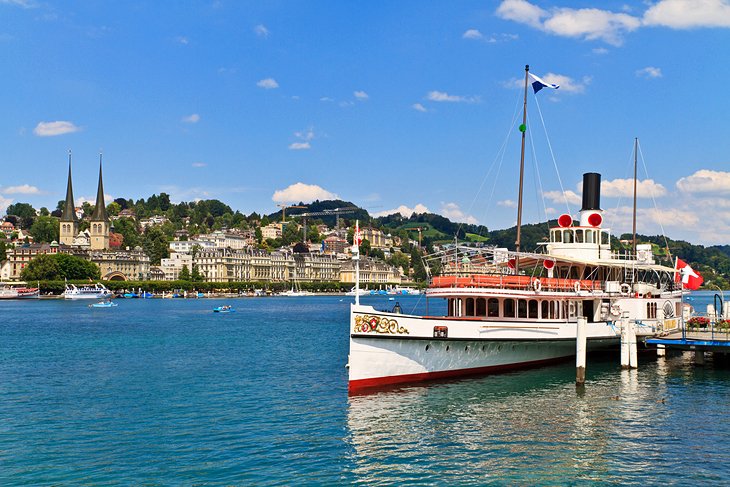
Several boat trips of different lengths explore the 38-kilometer-long lake, one of which, the William Tell Express, combines with a train excursion through the St. Gotthard Pass, linking Central Switzerland with the many attractions of the Ticino region.
From May to September, you can travel by paddle-wheel steamer (out of season by a diesel motorboat) from Lucerne to Flüelen, enjoying a three-course meal in the ship's saloon, then take a scenic train ride as far as the towns of Locarno and Lugano.
Address: Werftstrasse 5, Lucerne
Old Town
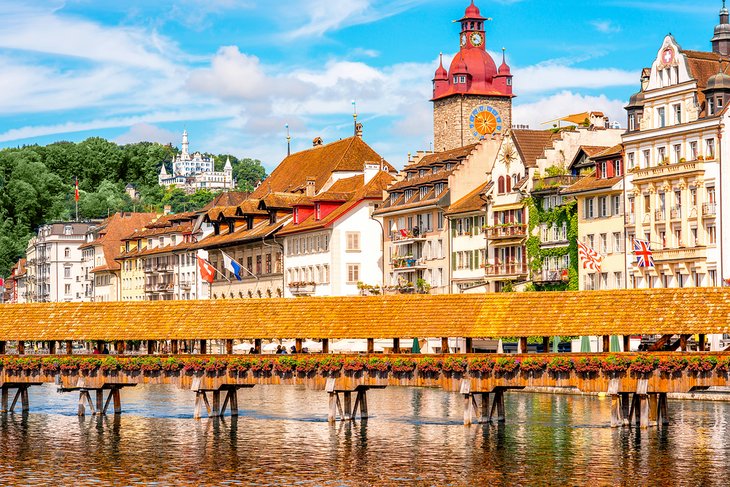
The Old Town of Lucerne, on the right bank of the Reuss, still preserves many old burghers' houses and little squares with fountains. Some of the timber-framed buildings bordering the stone streets are painted in bright colors, giving the Altstadt a fairy-tale atmosphere.
At the Kornmarkt is the Altes Rathaus, the Old Town Hall, built in 1602-06 in Italian Renaissance style but topped by a very typical Swiss hipped roof. The adjoining tower dates from the 14th century. West of the Kornmarkt is the picturesque Weinmarkt with a Late Gothic fountain.
In the Kapellplatz is the oldest church in Lucerne, St. Peter's chapel, built in 1178 but renovated to its present form in the 18th century. The Old Town is a delightful place to visit for a stroll, especially if you follow some of the narrow side streets.
Ride the Cog Railway up Mount Rigi
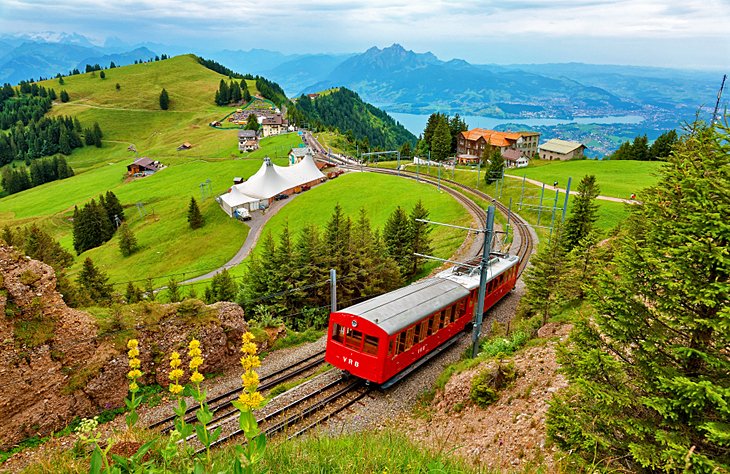
One of the signature experiences in Switzerland is to ride the cog railway from the shores of Lake Lucerne to an elevation of 1,798 meters on Mt Rigi. This is Europe's first cog railway, and you can ride in restored cars dating back as far as the railway's beginning. Some of the steam engines date to the 1920s.
From the top, views stretch all the way to the Black Forest in Germany. One of the popular things to do is make a scenic circle route by taking the boat from Lucerne to Vitznau, where you board the cogwheel train to Rigi Kulm. Then take another cogwheel train down to Arth-Goldau and catch a train back to Lucerne.
Spreuerbrücke
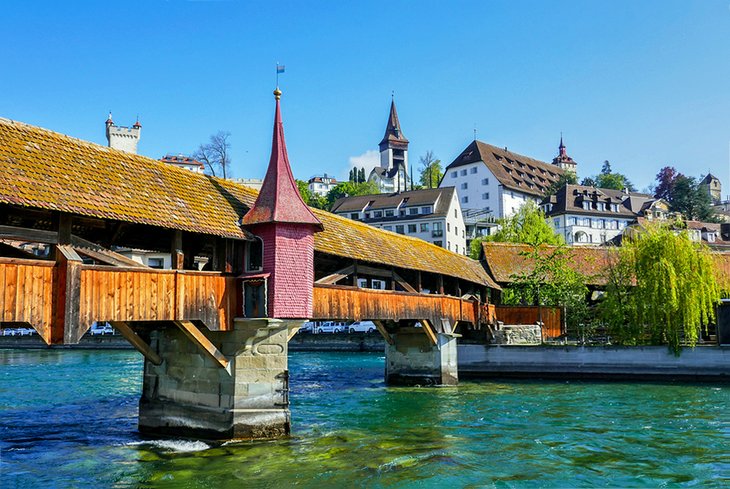
Surprising as it may be to have one covered bridge that has survived for several centuries, Lucerne has two. The second covered wooden bridge, the Spreuerbrücke, was built in 1406, and inside, on triangular panels under the bridge's rafters, are 45 paintings of the Dance of Death, known in German as the Totentanz.
Painted between 1616 and 1637 by painter Kaspar Meglinger and his students, this is the largest example of a Totentanz cycle known to exist. These are framed in black, each frame inscribed with explanations in verse of the painting's subject and the names of the patrons who donated them. Some also have portraits of the donors.
Löwendenkmal (Lion Monument)
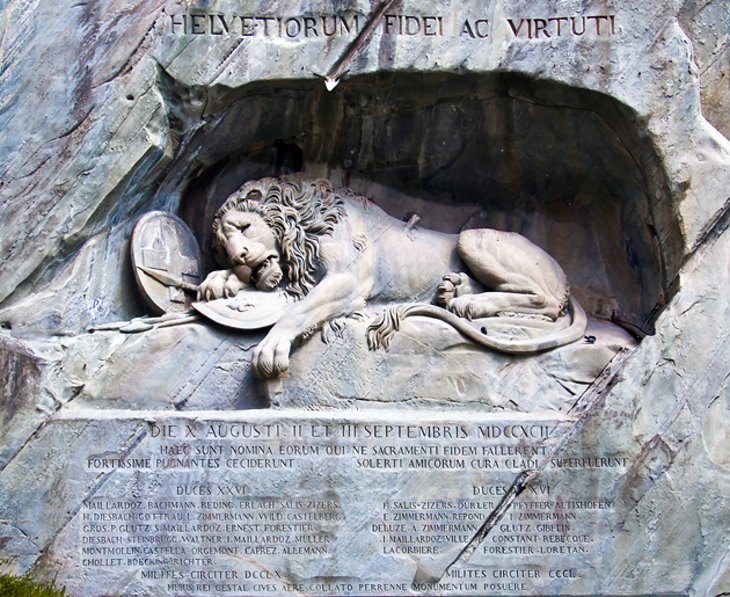
Just north of Löwenplatz is the famous Lion Monument, a huge figure of a dying lion hewn from the face of the rock ledge. Designed by Thorwaldsen in 1820, the monument commemorates the death of 26 officers and more than 700 troops of the Swiss Guards.
These mercenary soldiers were killed in Paris while protecting King Louis XVI during the attack on the Tuileries in the French Revolution in 1792. The touching monument is one of the best-known sights in Lucerne.
Address: Löwenplatz, Lucerne
Verkehrshaus der Schweiz (Swiss Transport Museum)
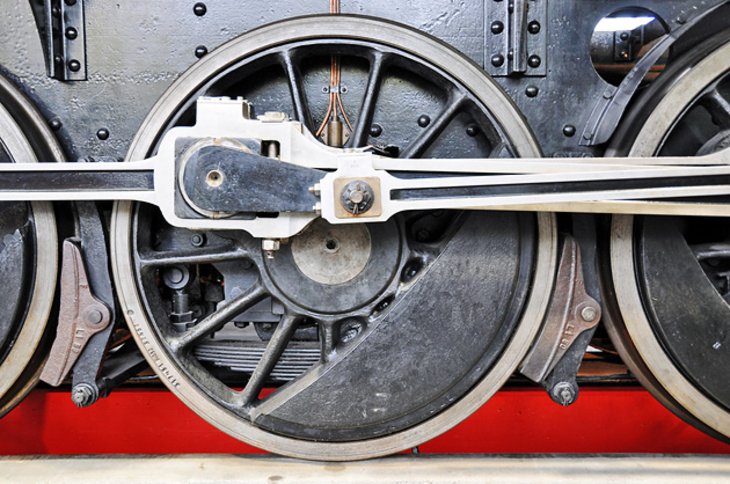
The large complex of exhibition halls and outdoor exhibits cover all forms of transport, as well as communications and tourism. Through rolling stock and railway locomotives and both models and actual examples of ships, aircraft, rockets, and automobiles, you'll follow the development of transportation from its earliest days, especially in its mechanized forms.
An entire exhibit explains the construction of the St. Gotthard rail tunnel. A 3D film theater replaces the previous IMAX theater with the largest screen in Switzerland, and a 150-projector Planetarium also offers daily shows.
Address: Lidostrasse 5, Lucerne
Official site: www.verkehrshaus.ch
Museggmauer & Türme (Town Walls and Towers)
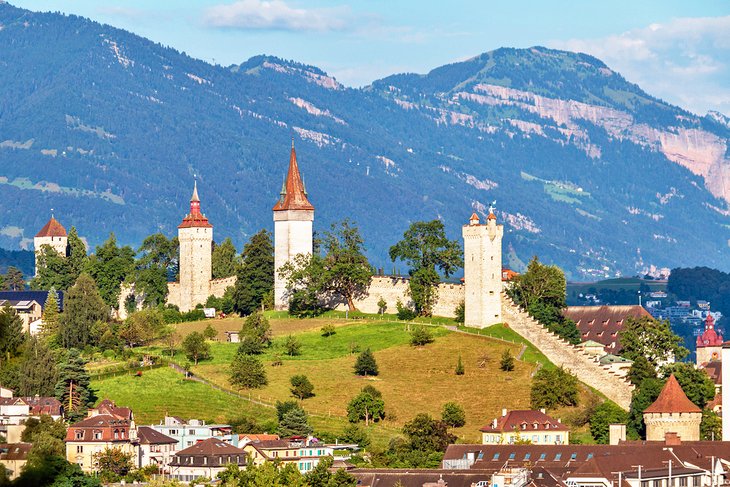
Along the north side of Lucerne's old town is a wall built between 1350 and 1408, with nine towers constructed in differing styles. The part built around 1386 is still almost completely intact, and you can climb four of the towers - Schirmer, Zyt, Wacht, and Männli - for views across the city, lake, and surrounding landscape.
The oldest of Lucerne's clocks, built in 1535, is in the Zyt tower and chimes hourly, exactly one minute before all the other city clocks. Inside the tower, you can see its mechanism at work.
Official site: www.museggmauer.ch
Hofkirche

On the site of the eighth-century Benedictine monastery of St. Leodegar is the twin-towered Hofkirche, which was rebuilt in 1634-39 but preserved the 1525 towers of the previous church. It is considered the most important Renaissance church in Switzerland. On the north tower is a Late Gothic sculpture depicting the Agony in the Garden.
Inside, the carved pulpit and choir-stalls are from 1639, and in the arcades surrounding the church are the tombs of members of old Lucerne families. Although the overall interior is simple and fairly plain, this just highlights the exuberant baroque gold altars. In the summer, recitals on the church's famous organ are held here.
Address: Sankt-Leodegar-Strasse 6, Lucerne
Official site: http://www.kathluzern.ch/st-leodegar-im-hof/
Jesuit Church
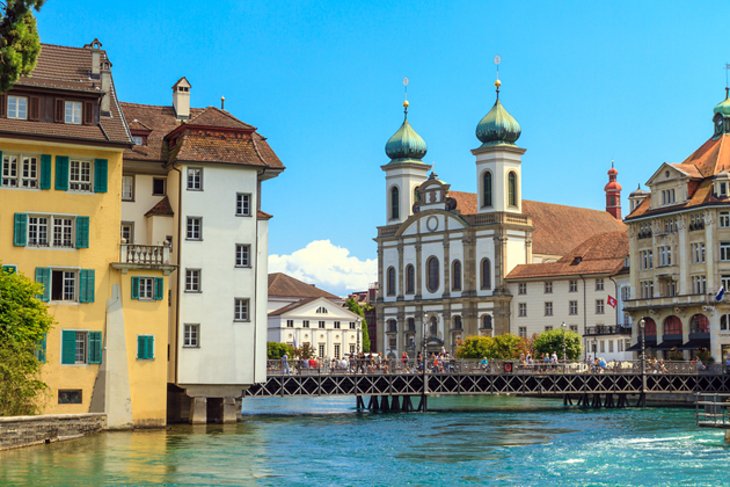
Switzerland's first large church in the Baroque style built north of the Alps was founded for the Jesuits, who were invited by the city of Lucerne in 1573 to establish a college. The city hoped that the Jesuits, who were active in the Counter-Reformation, would help stave off the influence of the growing Protestantism.
The interior was updated to the Rococo style in 1750, with an outstanding painted ceiling and ornate faux marble side altars. The onion-domed towers were completed in 1893. Check the schedule for concerts on the church's magnificent organ.
Address: Bahnhofstrasse 11a, Lucerne
Official site: www.jesuitenkirche-luzern.ch
Museum Sammlung Rosengart (Rosengart Collection)

If you're at all interested in Post-Impressionist art, this relatively new art museum alone is worth a trip to Lucerne. Particularly strong in works by Paul Klee and Pablo Picasso, the collection also features important works of more than 20 artists of the 19th and 20th centuries, among them Cézanne, Monet, Chagall, Braque, Kandinsky, Léger, Matisse, and Miró.
The 125 paintings and drawings by Paul Klee represent all periods of the artist's work and are arranged so you can follow the progression of his style and technique. The Picasso collection includes some of his earlier drawings but concentrates mainly on his paintings after 1938.
Angela Rosengart, the Museum's founder, and her father knew these artists personally, and the museum was built to house her personal collection. Among the Picasso works are portraits he painted of her.
Address: Pilatusstrasse 10, Lucerne
Official site: www.rosengart.ch
Gletschergarten (Glacier Garden)
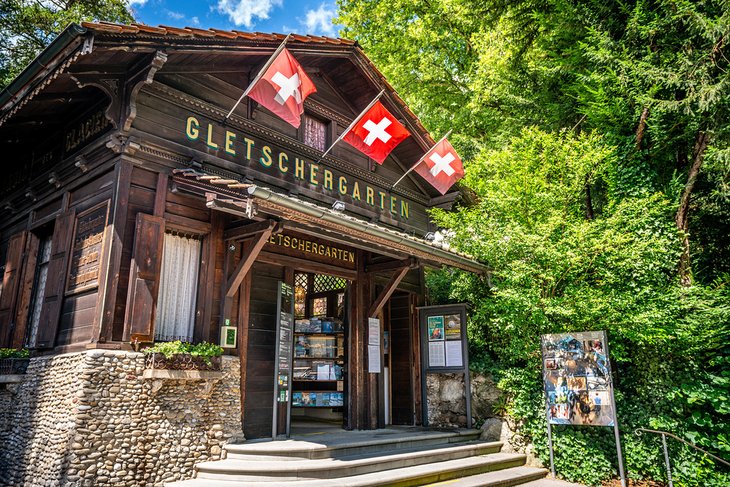
This remarkable relic of the Ice Age includes glacier-polished rock, erratic boulders dropped by the retreating ice, and 32 potholes formed at the base of waterfalls of melting glacial ice. Some of them are huge, and their formation is demonstrated by a working model of the process.
Exhibits also show how the changing climate affects the Earth. Higher up are an early climbers' hut and a lookout tower. In the museum are relief maps of Switzerland, groups of Alpine animals, rock specimens, and historic rooms.
Not at all related to the rest of the museum but great fun, especially for children, is the labyrinth of mirrors. The adjoining park is a good place for a picnic.
Address: Denkmalstrasse 4, Lucerne
Official site: https://gletschergarten.ch/en
Walk or Hike to Lakeside Viewpoints
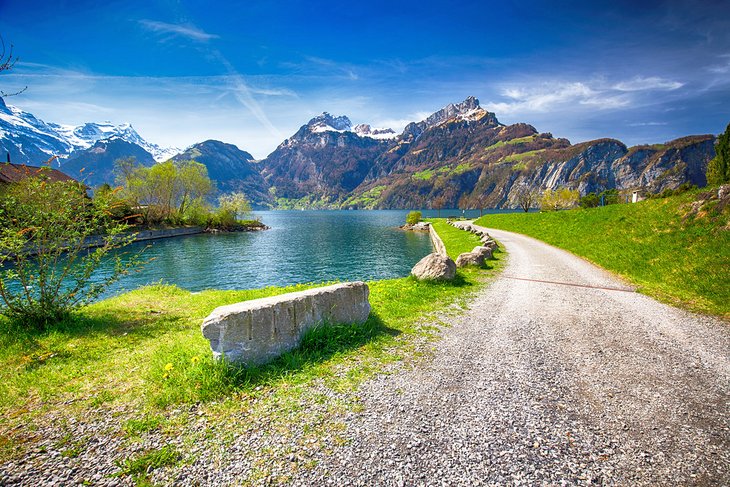
Lucerne and its surroundings are a paradise for walkers and hikers, with flat lakeside paths and more challenging day-long hikes in steeper terrain. Closest to the city is the level walking path circling Lake Rot, through a nature reserve. There's a beach and a playground along the way, and places to picnic.
More demanding, but also close to the city, the Bireggwald offers views of the lake and Mt. Pilatus; a marked forest trail climbs from the Biregghof bus stop to the Oberrüti lookout. You can continue on the trail, descending to the lake and returning to Lucerne by train.
The Bürgenstock Cliff Path is a good half-day trip from Lucerne. Reached by boat and the scenic Bürgenstock funicular railway, the well-groomed cliff path skirts dramatic rock ledges and reveals beautiful views of lake Lucerne and the Alps. The Hammetschwand lift replaces the steep part, so very little climbing is involved.
Engelberg-Titlis
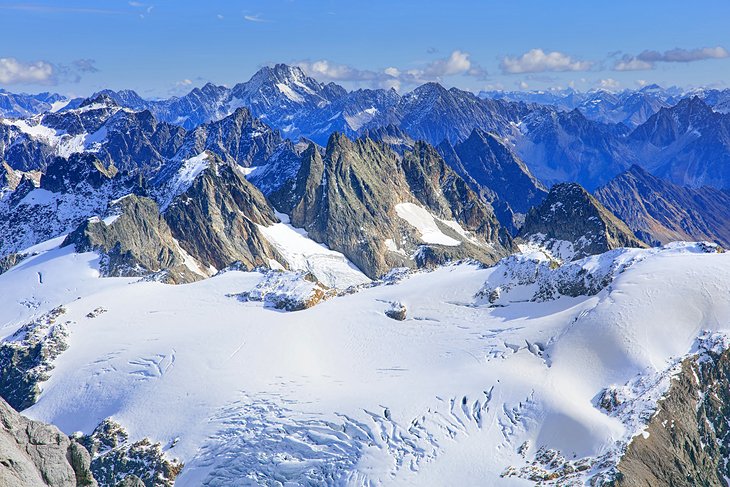
About 35 kilometers south of Lucerne, Engelberg-Titlis is Central Switzerland's biggest winter and summer vacation destination and one of Switzerland's top 10 ski resorts. Towered over by 3,239-meter-high Mount Titlis, the village of Engelberg is famous for its 12th-century Benedictine monastery, where monks still live and work today.
In the summer, the area is a popular base for mountain biking, hiking, golfing, and mountaineering, while the deep powder of the winter months lures skiers and snowboarders.
If you're visiting Lucerne in the winter, the trip is a fun way to experience the beautiful Alpine scenery here as well as some snow-based activities. At the top of the 3,020-meter summit of Mount Titlis, you can try snow tubing, explore the Glacier Cave, take a cliff walk, and ride on a gondola and the Ice Flyer chairlift to see breathtaking views of the Bernese Alps.
Bourbaki Panorama
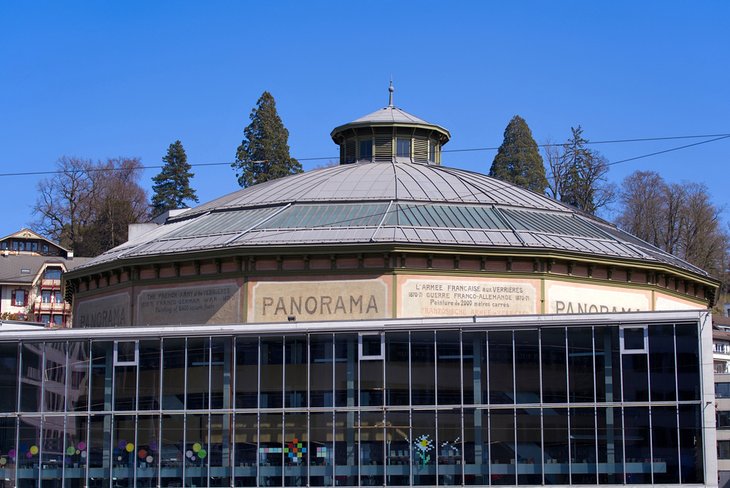
Perhaps the most unusual attraction in Lucerne is the enormous panoramic painting and sculpture depicting the escape of 87,000 members of the French army to Switzerland during the Franco-Prussian War in the winter of 1871. The circular painting and three-dimensional foreground are the work of Edouard Castres, who traveled with the army as a Red Cross worker.
Completed in 1881, the work is 112 meters long and 10 meters high and considered one of the finest examples of panoramic art. As you stand in the middle of this painting, figures and actual objects, such as a rail truck, turn it into a three-dimensional scene. Entrance to this attraction is pricey, but if you have a Swiss Travel Pass, admission is free.
Address: Loewenplatz 11, Lucerne
Official site: https://www.bourbakipanorama.ch/
Day Trip to Jungfraujoch
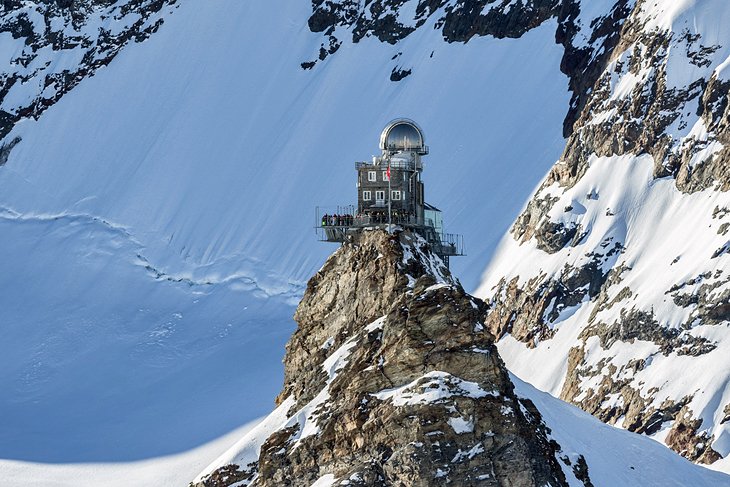
About 80 kilometers from Lucerne, the World Heritage-listed Jungfraujoch is known as the Top of Europe, and is home to the highest railroad station on the continent at 3,454 meters. You can go even higher on an elevator, which leads to the 3,573-meter summit of the Sphinx.
The cogwheel train trip up to the Jungfraujoch, passing through the mountain pass of Kleine Scheidegg, beneath the famous Eiger North Face, is a great way to soak up this stunning Alpine scenery.
While on the summit, you have a chance to explore the Ice Palace and admire the breathtaking views from the Sphinx Observation Terrace.
Schloss Heidegg (Heidegg Castle)
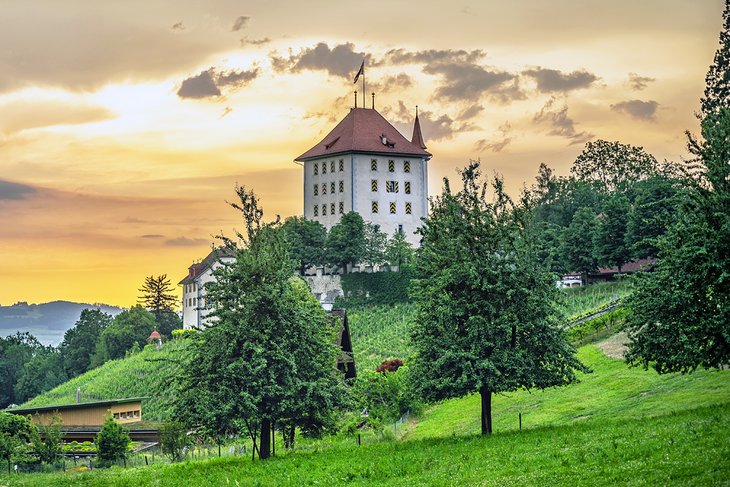
A 30-minute drive from Lucerne stands one of Switzerland's oldest castles, dating from 1192, and the oldest known residential building in the Canton. In the 1600s, the feudal Gothic manor was expanded with a Baroque tower.
Today, it is the history and culture center of the Seetal Valley, a living history museum that illustrates the life of country aristocracy over a period of several hundred years. A tour begins with the Heidegg Tower Cellar Stories, an innovative spatial audio play that brings 800 years of history to life in a dramatic way.
Children won't want to leave the castle's grand playroom in the tower's top floor, where they can dress up as princes and princesses. Before leaving, stroll through the rose gardens, and stop for coffee and cake at the café.
Richard Wagner Museum
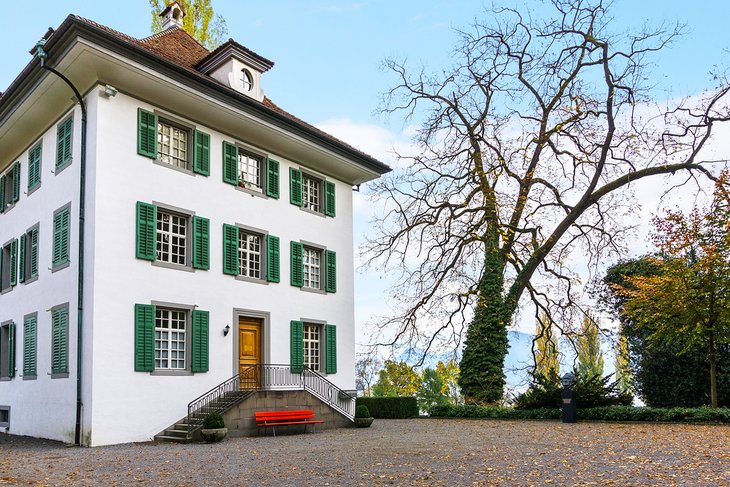
Opera lovers should visit the Tribschen Villa, the home of Richard Wagner from 1866 to 1872, where he composed some of his best-known works. It was here that he completed Die Meistersinger von Nürnberg and portions of Siegfried, as well as The Emperor March.
On a tour of the villa, you will hear the romantic story of his Tribschener Idyll, composed as a serenade for his wife Cosima on her 33rd birthday and first performed here. Along with personal items, furniture, and original manuscripts and musical scores, you'll see (and perhaps hear) the Erard grand piano on which he composed.
Address: Richard-Wagner-Weg 27, Lucerne, Switzerland
Official site: https://richard-wagner-museum.ch/home-en-us



